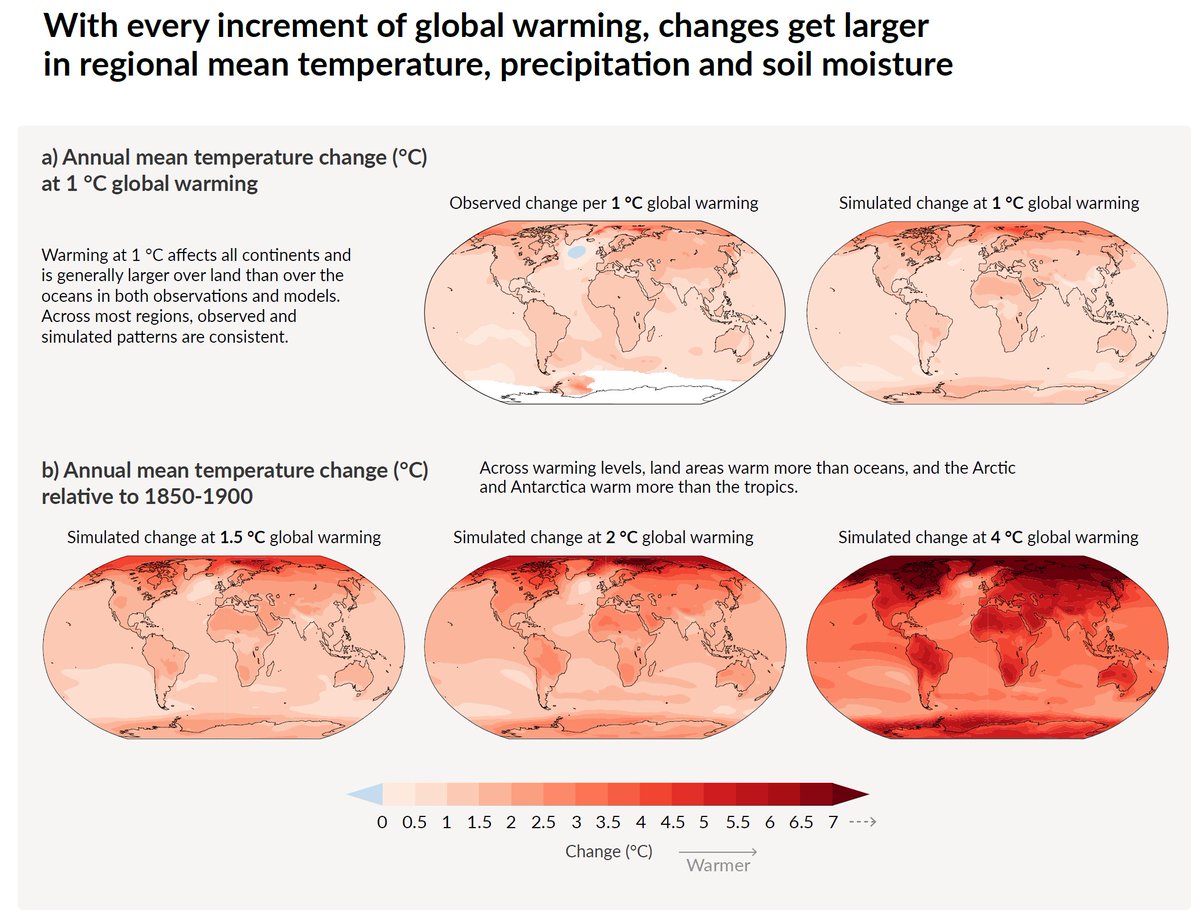After the first bang of the @IPCC_CH AR6 report, it's time to look at my favorite part of the report:
visuals in the SPM.
It was a privilege to work with a team of #dataviz and information design experts @angelamorelli @tomhal99 @jordanharold on these visuals
(1/n)
visuals in the SPM.
It was a privilege to work with a team of #dataviz and information design experts @angelamorelli @tomhal99 @jordanharold on these visuals
(1/n)
The first visual shows us that human influence has warmed the climate at a rate unprecedented in at least 2000 years.
I really like how it contrasts the climate our societies were used to during their development with the evidence that we are responsible.
(2/n)
I really like how it contrasts the climate our societies were used to during their development with the evidence that we are responsible.
(2/n)

A nice animated version by @angelamorelli (3/n)
https://twitter.com/angelamorelli/status/1424675975015632899?s=20
The second visual shows how observed warming is driven by emissions from human activities.
It shows that greenhouse gases alone would already have warmed the planet by 1.5°C, but air pollution is currently cooling it. Both need to be tackled.
(4/n)
It shows that greenhouse gases alone would already have warmed the planet by 1.5°C, but air pollution is currently cooling it. Both need to be tackled.
(4/n)

Also here a nice animation by @angelamorelli (5/n)
https://twitter.com/angelamorelli/status/1424676305564573700?s=20
Climate change is already affecting us our activities contribute to many observed changes in weather and climate extremes.
Each red hexagon represents a world region in which observed hot extremes have increased, with the number of dots representing our confidence.
(6/n)
Each red hexagon represents a world region in which observed hot extremes have increased, with the number of dots representing our confidence.
(6/n)

This visual was actually too large to fully fit in a single tweet. Here is the same visual for heavy precipitation and droughts.
We see it's happening and we know it's us.
(7/n)
We see it's happening and we know it's us.
(7/n)

Combined again in a single visualisation (8/n)
https://twitter.com/angelamorelli/status/1424677003916156932?s=20
The fourth visual shows scenarios that help @IPCC_CH describe the implications of our emission reduction choices.
They cover a full range from very high emissions that require a roll-back of climate policies to very low emissions that require deep cuts in the next decade. (9/n)
They cover a full range from very high emissions that require a roll-back of climate policies to very low emissions that require deep cuts in the next decade. (9/n)

The final visual for today shows that every increment of warming matters for climate impacts.
That is true for temperatures. (10/n)
That is true for temperatures. (10/n)

As well as for precipitation and soil moisture - important for the impact heatwaves have on society and crops.
(11/n)
(11/n)

Enough for today. Stay tuned for the second part of visual over the next days. (end)
• • •
Missing some Tweet in this thread? You can try to
force a refresh















